- Administrator
- Albums and Singles
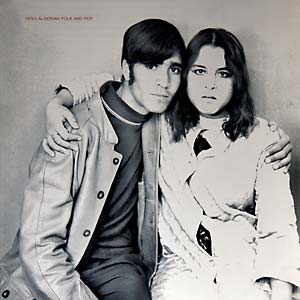
Sublime Frequencies is thrilled to present a second volume of classic tracks from Algeria's popular music history. Where volume 1 focused on the early to mid-1970s Rai scene in western Algeria, this album features a variety of pop and folk styles from that same period. From the heavier rock and psychedelic sounds of Rachid & Fethi, Les Djinns and Les Abranis, to the haunting folk music of Kri Kri and Djamel Allem and the film soundtrack moods of Ahmed Malek, 1970s Algerian Folk & Pop documents a key period in the modern musical renaissance of a nation in transition.
Most of these tracks are from 45 rpm singles, the key format during the early 1970s before the cassette took over as the medium of choice. Western musical influences can be heard throughout this extremely diverse record, yet there is an undeniable Algerian sense of sadness contained here within a more tolerant space in time between two of the country's most significant historical periods; National Independence from France and the darker times of a brutal civil war yet to come. Compiled by Hicham Chadly, this limited edition LP comes in a full-color gatefold jacket with lovely images from the period and extensive liner-notes by Omar Zelig, Algeria's most legendary radio DJ.
More information will soon be found here.
Read More
- Administrator
- Albums and Singles
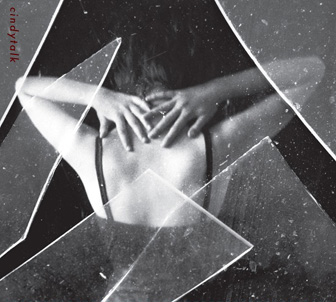 Not all that dissimilar from the trend one time collaborator Robert Hampson made from Loop to Main to his solo works, Gordon Sharp has also evolved from a more conventional musician (appearing on works by This Mortal Coil and the Cocteau Twins no less) to an idiosyncratic electronic composer in the past 30 years. In line with his work from the earlier part of this century, touchedRAWKISSEDsour is a mass of laptop generated noises that are actually much more nuanced then they would seem on the surface, intentionally obscuring a rich world of composition.
Not all that dissimilar from the trend one time collaborator Robert Hampson made from Loop to Main to his solo works, Gordon Sharp has also evolved from a more conventional musician (appearing on works by This Mortal Coil and the Cocteau Twins no less) to an idiosyncratic electronic composer in the past 30 years. In line with his work from the earlier part of this century, touchedRAWKISSEDsour is a mass of laptop generated noises that are actually much more nuanced then they would seem on the surface, intentionally obscuring a rich world of composition.
One of the things I found most compelling about my first listen to touchedRAWKISSEDsour is how Sharp sneakily mixes in conventional sounds and instrumentation in these otherwise digital whirlwind chaotic recordings.Low-end sweeps and high pitched screeching might be the first impression of "Dancing on Ledges," but a little bit of guitar begins to sneak through and at the end taking on an almost overtly funk sound to it.Piano appears throughout on the lengthy "Yugao," and makes for a stark traditionalist contrast between the off-kilter orchestral samples and textural layers of DSP noise.It makes for perhaps the most melodic, beautiful piece of music on the album, but sounds like it came from a different universe entirely.
Noisy might be a characteristic of recent Cindytalk albums, and this is no exception, but there is also a good deal of rhythm to be had, even though it might be unconventional to say the least."E Quindi Uscimmo a Riveder le Stelle" has Sharp piling dissonant loops together with harsher moments of laptop noise stabbing through.The loops, while of an unclear source, have a metallic complexity to them that fits together like a digital gamelan.Closing piece "Mystery Sings Out" is built from similar rhythmic techniques, but, in a more open, subdued composition.What sounds like synthetically modeled rain and thunder sounds creates the mood as bits of voice sneak through, perhaps as a passing reference to Sharp's previous role as a vocalist.
More rudimentary and erratic rhythms underscore "Reversing the Panopticon," paired with a twinkling, melodic electronic passage up front in the mix.While at first it might seem to follow a more conventional structure, before long it slips into disorder and entropic noise, with even what sounds like some raw guitar feedback tacked on at the end.A majestic, almost fragile melody also is emphasized on "Mouth of my Sky (Open Up and Swallow Me)," but again placed within the confines of a larger industrial soundscape.The beautiful and ugly slowly lurch along together for the piece, paired up perfectly.
Like last year's A Life is Everywhere, touchedRAWKISSEDsour at first blush makes for a messy, dissonant and extremely chaotic sounding record.It does not take long, however, for Sharp's musicianship and ear for composition to reveal itself.These concessions to melody, or brief flashes of conventional instrumentation is exactly what makes this album so memorable.Complex and multifaceted, each song seems to mutate with every listen, a feat very few artists working in similarly discordant techniques can manage to accomplish.
samples:
 
Read More
- Administrator
- Albums and Singles
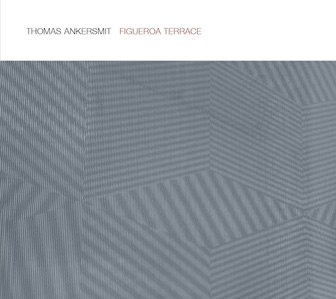 Over the last few years, Thomas Ankersmit has been shifting his primary instrument from a saxophone to modular analog synthesizer. Surprisingly, Figueroa Terrace is technically his first album proper, with previous releases consisting of collaborations and live performances. Unsurprisingly, however, is his use of the less immediate setting of the studio to his advantage, constructing a dizzyingly dynamic album length piece that showcases all of the strengths he has shown in previous releases, with an even higher level of polish.
Over the last few years, Thomas Ankersmit has been shifting his primary instrument from a saxophone to modular analog synthesizer. Surprisingly, Figueroa Terrace is technically his first album proper, with previous releases consisting of collaborations and live performances. Unsurprisingly, however, is his use of the less immediate setting of the studio to his advantage, constructing a dizzyingly dynamic album length piece that showcases all of the strengths he has shown in previous releases, with an even higher level of polish.
Even within this studio setting, Ankersmit made a conscious decision to avoid digital sound sources as much as possible, and other than some reverb and recording/editing, this piece is entirely analog.That feel is apparent from the first minutes of Figueroa Terrace, with scattered ring modulated tones skittering along rapidly over a bed of low end drone.The piece never sits still for these initial minutes, and the hyperkinetic nature makes it stand out well without ever becoming dull.
Eventually the composition drops into quiet ringing tones and what sounds like (but is obviously not) a series of rapid microscopic digital delays. It is during these quiet moments the sound of a scraping contact microphone cuts through, jagged and raw, acting as the only non-electronic sound on this entire record.At the same time, the quiet ringing becomes shrill and raw before withdrawing to leave a massive expanse of insect like noises and heavy low end rumble.
Spaciousness becomes the focus for awhile, with synthetic ambience occasionally met with a low end idling bass passage or high frequency radar pings.Chirping beeps and noisy interruptions keep the sense of movement happening before converting into sharp, violent high pitched bits with sweeping low end passages.The final minutes throw everything together to build to an appropriately dramatic climax.High and low frequency passages clash violently, reflecting off one another to build an appropriate sense of tension.At this point, while becoming the most dissonant, it also has the most traditionally composed feel to it, the structure helping guide the noise perfectly.
I have begun to wonder how long it will be before modular synthesizers becomes passé.While some artists, such as Thomas Ankersmit and Robert Piotrowicz use the confusing array of patch bays and adjustment knobs brilliantly, for many others it comes across as just random noise.I mean, damn, Billy Corrigan just did a performance with one, which simply served to emphasize my theory that it can be an instrument that is more about how many modules a person has instead of how well they use them.Figueroa Terrace, however, reassured me that the instrument still has relevance when being manipulated by a true artist and composer, and Ankersmit continues to demonstrate how much of an expert he is.
samples:
 
Read More
- Administrator
- Albums and Singles
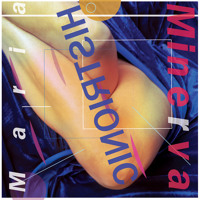
NNF's favorite comedienne/diva/artstar Maria Minerva returns with her greatest album to date, Histrionic, encapsulating universes of life wisdom, deadpan truth, and heartbreak abstractions.
The album's 11 skewed slices of synthetic pop function collectively as a fragmentary self-portrait: there's the shuffling, layered beats of various UK bass scenes absorbed during her years in London clubs; the anthemic '90s global dance pop of her youth in Estonia; the spoken-word and experimental samples gleaned from her university days; and the floating textural ballads born from the displaced life of a touring musician, stranded in hotel rooms and airport terminals. The lyrics are similarly layered, vulnerable yet oblique, embracing pop tropes of romance and heartbreak while also hinting at their hollowness. It’s this woozy commingling of dispassion and melody, of fantasy and foreignness, that infuses Histrionic with such rich ambiguity.
More information here.
Read More
- Administrator
- Albums and Singles

Membrane Pop is the debut Software Recording Co. release by experimental duo Sculpture.
The self-described opto-musical agglomerate was born in 2008 after a chance encounter between British musician Dan Hayhurst and New Zealand animator Reuben Sutherland. By combining practices, the pair's first test splattered a psychedelic palette that pushed them to explore sensorial intricacies emerging from chance operations.
Raw materials for Sculpture's music include a mix of analog and digital practices. In Hayhurst and Sutherland’s hands, tape manipulation, samples, found sounds, aleatoric and algorithmic programming and live improvisation become more complementary than you might imagine.
Sculpture draws from experimentalism to promote new potentials for pop and electronic music in an age where many of our sci-fi fantasies have become mundane occurrences. "I’m aiming to make a coherent, adventurous electronic pop record with its own voice and identity," Hayhurst explains. "I don't think experimental music has to be dark, difficult or joyless. I try to make something playful, and maybe a little absurd."
At the center of Membrane Pop is a phenomenological approach to sound and performance. "Symbolic Molecule" is a morphing, unsettled groove, but its addictive properties remain potent. "Polymorphic Operator" bubbles with a sort of chemical effervescence; the ghost of Jamaican dub modulating itself into an infinite haze. Sculpture's compositional predilection emerges amidst scrambled sound worlds in "Hackle Scam Populator," while "Distraction Display" is perhaps the closest ambient cut on the record.
What makes Sculpture sculptural (we bet the original Abstract Expressionists would have dug them) are moments where their craftsmanship feels almost animate within the constraints of musical time. In the opening seconds of "Lingual Junk," these moments appear to freeze and unthaw an old recording. As the track narrative unfurls, you can feel Hayhurst fighting to acclimate the sound from out of cryostasis and into his reality.
If a majority of the music you hear today resembles the hard-set stone carvings of history, then Sculpture's offerings are imagined, transitory statues with no fixed place in time. Hearing Membrane Pop in a different context, time or place may well bring about a different experience. Or perhaps a similar result.
Sculpture's Membrane Pop will be released in LP and digital formats on May 13, 2014.
More information available here.
Read More
- Administrator
- Albums and Singles

Universe Thin As Skin is the debut solo album from Portland, Maine's Tom Kovacevic, a multi-instrumentalist who has been a vital part of the Portland musical landscape through his work with the bands Olas, Fire on Fire, Cerberus Shoal, and tarpigh. For his solo debut, Kovacevic focuses on the Arabic music he has been studying for twenty years.
Kovacevic had played guitar for many years when he decided to learn how to play the guitar’s ancestor, the oud. After playing the oud for some time he learned the nay flute (rim blown and fully chromatic) which is not only one of the oldest instruments in continual use (4,000+ years), but also one of the most difficult to play. One of the predominating musical influences on the record is related to the drums used. The djembe and tchung drums used were made in Senegal, and artists such as Bembeya Jazz National, Super Diamano De Dakar, and Salif Keita are vital influences.
Universe Thin As Skin was recorded at the Blue House, where Tom lives with Cerberus Shoal and Big Blood member Caleb Mulkerin, who also recorded the album. The record took about six months to record, as both would meet when they had availability. This is also the main reason Tom played all the instruments on the record.
Lyrically the album addresses life in this world in which we find ourselves. There are references to the new physics, an area of interest. "Song for Peter" was written for the brother of a good, good friend whose life hung in the balance (he survived). The nay flute pieces "Kürdi" and "Dulab Bayati" are in traditional Maqams (modes), and "Dulab Bayati" is in a traditional Arabic form. The title track is special because it was written in the living room, just in front of the dining room pictured on the front and back covers of the album. This is the house Tom grew up in, and it is no longer in the family.
Tom currently performs with Olas, a group that features two flamenco dancers and original compositions, as well as with the Alhan Middle Eastern Classical Music Ensemble.
More information is available here.
Read More
- Administrator
- Albums and Singles
 Newly released on vinyl for the first time (now with actual cover art!), this aptly titled 2003 album shares a surprising amount of common ground with last year's Nocturnes.  The key difference is that Melancholia is broken up into 14 discrete quasi-impressionist piano vignettes.  While history has shown that Basinski is primarily at his best with more longform work, this is still a likable and somewhat fascinating effort that occasionally offers up a few rather unique sci-fi-meets-Claude-Debussy moments.
Newly released on vinyl for the first time (now with actual cover art!), this aptly titled 2003 album shares a surprising amount of common ground with last year's Nocturnes.  The key difference is that Melancholia is broken up into 14 discrete quasi-impressionist piano vignettes.  While history has shown that Basinski is primarily at his best with more longform work, this is still a likable and somewhat fascinating effort that occasionally offers up a few rather unique sci-fi-meets-Claude-Debussy moments.
Like many of William's releases, Melancholia has its roots in tapes that he made in the '80s, though its neo-classical feel is quite a bit different from most of the other Basinski albums that I have heard.  That classical bent is most pronounced in the extremely similar Parts I and IX, which combine a brief snatch of sadly descending piano with mournful bowed strings…and something that sounds like a heavily reverbed and warped recording of a birdsong.  Aside from being almost interchangeable in every way, the two pieces are noteworthy for highlighting Melancholia's most bizarre feature: it is quite possible that this entire album was spawned from less than a minute of recorded music.  Many motifs repeat themselves, each piece is built upon just one repeating theme, and few of William's loops ever last longer than 5 or 10 seconds.
For me, that is what makes Melancholia a compelling release: it is not nearly as absorbing or hypnotic as his later work, but William inventively makes a lot of something out of virtually nothing, even if it does all feel like a series of sketches.  Admittedly, the best pieces are probably the aforementioned two Debussy-meets-howling-space-monkey works, as they sound like nothing else that I have heard.  However, a number of other pieces offer significant rewards if listened to closely enough, particularly Part VIII, which obliterates anything recognizably piano-like to leave only a shimmering, crackling, and undulating haze.  Several other pieces perform similar feats with a fair amount of success, such as Part II, which enhances its languorous melody with a ghostly afterimage.
Despite all those appealing traits, Melancholia is definitely not one of William's stronger efforts, primarily because it seems like Basinski is recycling so many of his ideas without going anywhere particularly fresh with them: a number of pieces seem virtually identical to one another.  Also, as mentioned earlier, William's particular strain of genius tends to only be apparent when he allows himself plenty of time to stretch out.  The far more recent "Nocturnes" is the most illuminating comparison in this case, as Basinski takes a similarly brief and basic piano theme and stretches it into 40-minutes of subtly shifting, mesmerizing beauty.  On Melancholia, William was clearly still trying to figure out the possibilities of that approach, keeping his experiments quite short.  While it is still an enjoyable album and an interesting window into Basinski's evolution, Melancholia is probably only worth investigating for those who have already plunged into his major albums and crave still more.
 
 
Read More
- Administrator
- Albums and Singles
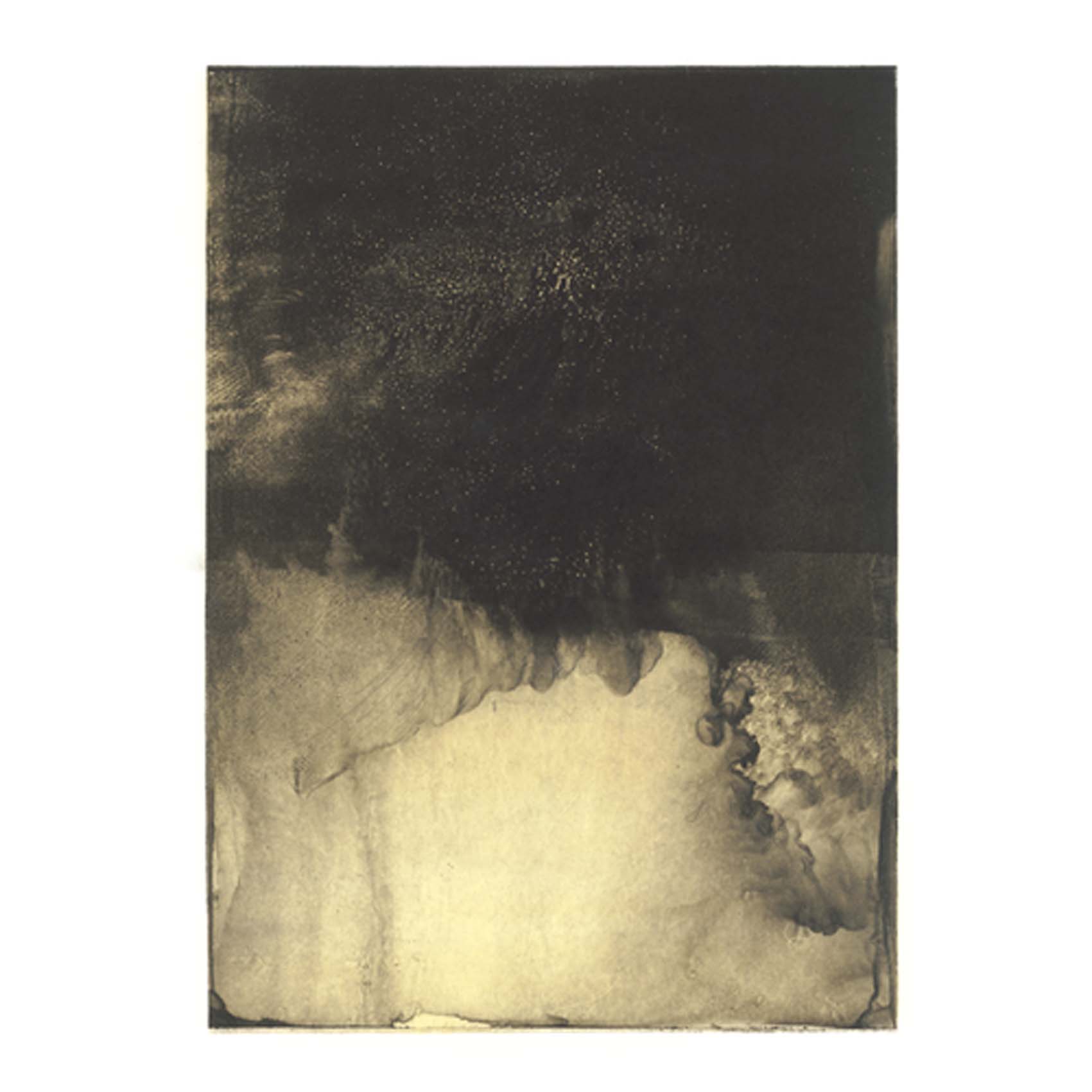 This album documents the convergence of all kinds of wonderful things at once: Students of Decay, Andrew Chalk's artwork, Rashad Becker's mastering talents, and two of my favorite West Coast experimentalists.  Appropriately, the resultant music is both excellent and distinctive, resembling an eclectically assembled chamber music ensemble trying their hand at understated, improvised drone music and realizing that they should have been doing that all along.
This album documents the convergence of all kinds of wonderful things at once: Students of Decay, Andrew Chalk's artwork, Rashad Becker's mastering talents, and two of my favorite West Coast experimentalists.  Appropriately, the resultant music is both excellent and distinctive, resembling an eclectically assembled chamber music ensemble trying their hand at understated, improvised drone music and realizing that they should have been doing that all along.
I opens with its boldest and most ambitious piece, the 9-minute "Parting Lights (Suite)," which combines Croy's rapid and repeating koto arpeggio with McCann's groaning cello and something that sounds like a Japanese flute emulating a small flock of chirping birds.  Gradually, that chaos gives way to a densely undulating web of Sean's melancholy bowed strings before transforming yet again into a lovely koto solo, before finally coming back around to a variation of the opening theme.  I am not entirely sure what to make of "Parting Lights," as it is impressive that these two Californians have managed to create something that sounds like ancient Eastern ritual music, but it feels a little too busy and condensed for me to completely fall in love with it.  The more languorous and fluid pieces that follow are much more to my liking, even if they are a bit less unique.
To my ears, it is the shimmering, dreamlike, and gently groaning drone of the similarly lengthy second piece ("Alexandria") that steals the album.  While there is not anything particularly overt that separates it from work by a number of similar-minded drone artists, there are a number of subtle touches that elevate it into something quite special.  In particular, the production is quite striking, as it sounds like Croy and McCann are collaborating with other musicians located on the other side of a vast cathedral.  Also, the variety of textures is quite wonderful too, as the duo maintain a perfect balance of seemingly untreated violin and cello, more harshly metallic koto, and warmly blurred strings.
The four comparatively brief other pieces that remain are all quite good as well, however, and admirably avoid repeating any ideas from the lengthier openers.  "Momiji," for example, is built solely upon a strong descending koto theme enhanced with some beautifully bittersweet violin accompaniment by McCann.  The following "The Inlet Arc" unexpectedly sounds like a glacially slow variation of "Momiji" being played in a cavernous, warmly reverberating room, but feels completely different.  "Column of Mirror," on the other hand, reprises the fairly straightforward drone of "Alexandria," but transforms it with some very absorbing and vibrantly quavering metallic buzz.  I then concludes on an unexpectedly beatific and celestial note, as Croy's koto in "Hollow Pursuits" evokes nothing less than a cherub idly plucking a harp on a cloud as McCann's strings swell around him.  While that is perhaps not my genre of choice most days, it is nevertheless an impressive feat and a very effective illusion.
Admittedly, a few songs do not work as well as others, but I went into I with fairly high expectations and they were mostly exceeded: this is quite an inventive, nuanced, and likable effort.  Aside from just being a successful pairing of two excellent and similarly minded musicians, I is a very skillfully edited and produced album as well, presenting the duo's ideas in the most effective way possible.  I suspect that that is probably McCann's handiwork, as I was first exposed to him as a producer rather than as a musician, but Croy may still have secret talents that I am unaware of (and, of course, one can never discount the impact of Rashad Becker).  In any case, I sounds great and it is great, as I would be hard-pressed to find another piece in either artists’ discography that tops something like "Alexandria."
 
Read More
- Administrator
- Albums and Singles

Thomas Ankersmit is a musician and installation artist based in Berlin. Since 2006 his main instrument, both live and in the studio, has been the Serge analogue modular synthesizer.
Acoustic phenomena such as sound reflections, infrasonic vibration, otoacoustic emissions, and highly directional projections of sound have been an important part of his work since the early 2000's.
In the winter of 2011-2012, Ankersmit was invited by the CalArts electronic music studios, Los Angeles, where the Serge was originally developed in the early 1970s, to record new music with their heavily customized and recently restored "Black Serge" system.
In addition to conventional analog synthesis techniques (FM, AM, ring modulation, filtering, enveloping and panning under voltage control), Ankersmit used various kinds of waveshaping, distortion and feedback (both internally as well as via a microphone and speaker setup in the studio); oscillator-generated frequencies at the upper and lower limits of auditory perception; a patch matrix to control quick transitions; a homemade circuit-bending type interface to create momentary interruptions to the signal flow, and the scraping of a contact microphone. Aside from recording, editing, and a few instances of reverb, no digital technology was used.
The music is finely tuned and highly detailed, yet also visceral and raw. Marked by sharp perceptual contrasts, the piece shifts between dense formations of electric noise, to fields of micro-events moving with an intuitive logic, and feedback-drones of overwhelming intensity. The sounds have a real-world physicality, bringing to mind swarms of locusts, distant storms and creaking machinery rather than "synthesizer music."
The piece was premiered in North America at REDCAT in downtown Los Angeles and in Europe at Berghain, Berlin, for the MaerzMusik Festival.
The music is originally quadraphonic and mixed to stereo for this release. Figueroa Terrace is Ankersmit's first full-length solo studio release.
Thomas Ankersmit: Serge analogue modular synthesizers, contact mic. Recorded at CalArts, Valencia and in Los Angeles, December 2011-February 2012.
More information is available here.
Read More
- Administrator
- Albums and Singles

This new Punk 45 album is a collection of tracks of twisted, raw and energized proto-punk music from the early 1970s, ahead-of-its-time music which led the way for the birth of punk in the second-half of the 1970s.
This new album is compiled and has extensive sleeve-notes by Jon Savage.
Punk 45: Sick on You! One Way Spit! After the Love & Before the Revolution: Proto-Punk 1969-77 is the third volume in this series, following on from the two earlier albums as well as the massive 400-page Punk 45s cover art book published last year.
While the first in the series, Punk 45: Kill The Hippies! Kill Yourself!, focused on the rise of underground punk in America, and the second album, Punk 45: There is No Such Thing as Society did the same for punk and post-punk in Britain, this album draws upon some of the stripped-down hard garage and post-glam sounds of mainly obscure bands that existed in the early 1970s - that were to prove the template for the forthcoming punk movement.
This is a unique and fascinating collection of proto-punk tracks from across the USA - Cleveland's Electric Eels, San Francisco's Crime, Los Angeles' Zolar X, Baltimore's George Brigman and more – as well as from the UK – with Joe Strummer's pre-Clash 101ers, the speed- induced r'n'b of the Count Bishops, and others also included.
As usual the album comes complete with text, biographies on each of the bands, exclusive photos and original record artwork.
The album is released on CD with outsize large booklet and thick slipcase and limited-edition super-loud, super-heavy double gatefold-sleeve vinyl edition complete with full sleeve-notes and free download code. These Punk 45 releases are also the first that Soul Jazz Records are making available as worldwide digital releases.
Read More
- Administrator
- Albums and Singles

Jeff Burch's first solo full-length album is comprised of two expansive instrumental compositions anchored by beautiful old acoustic guitars and a modular synthesizer.
He hoists his sounds up through the remnants of the 60's downtown drone spirit, through the fetid fruits of post-war central Europe and the scattered output of present-day suburban outsiders. The arrangements shift gracefully from floods of lush string texture to driving guitar and drum motif, from ebbs of brass and deep electric sine wave to thick hazes of clanging din and steely whine.
Cover photographs by iconic New York artist Roni Horn.
Composed, recorded and mixed between 2010 and 2012.
Recorded with Casey Rice/Designer (Tortoise, Dirty Three) at Classicx, Melbourne and Jamie Kennedy (of Surf City) at Henry Street Studios, New York City.
Featuring guest percussion by Stephen James (Songs, Rand and Holland), electric guitar by Tres Warren (Psychic Ills, Compound Eye, Messages), tenor saxophone by Marcus Whale.
Mastered by Patrick Klem (Sonic Youth, Six Organs of Admittance, The Dead C) at Klemflastic Sound, Phoenix.
Originally from the crystalline shores of northern New Zealand, Jeff now resides in New York City's torrid Lower East Side. Head of imprint The Spring Press, he has also founded numerous groups in both New Zealand and Australia.
Out May 13th.
More information will eventually be found here. Listen here now.
Read More

